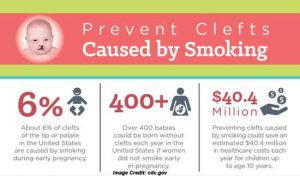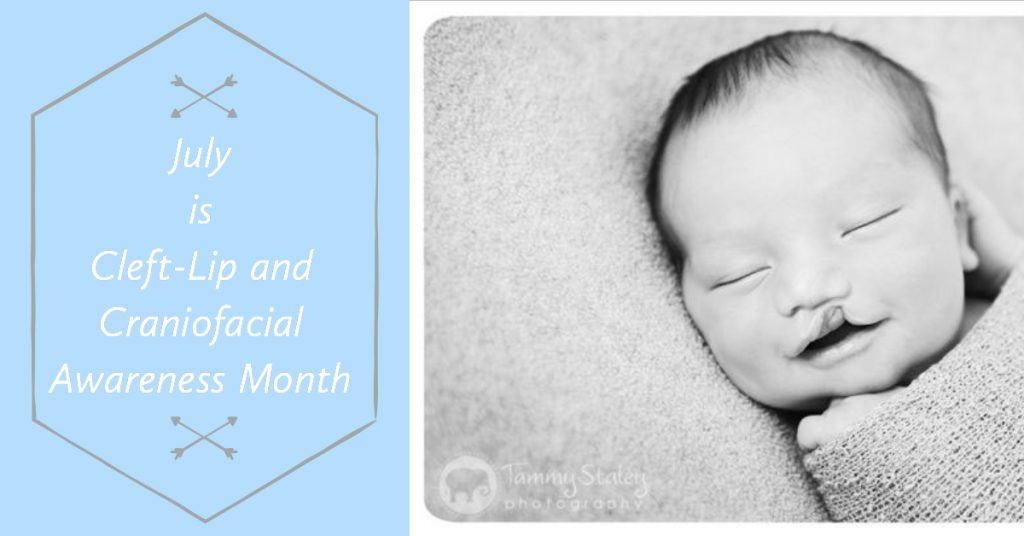Cleft and craniofacial conditions affect thousands of infants, children, teens and adults in the United States each year. Some are born with congenital anomalies like cleft lip and palate, others with more complex, life-threatening craniofacial conditions. (http://www.nccapm.org/index.html)
1. One of the Most Common Birth Defects. One out of every 600 newborns is affected by cleft lip and/or cleft palate, among the most common birth defects in the United States, according to the Cleft Palate Foundation.
2. Many Clefts can be Repaired with Little Scarring. From Cliftline.org, Cleft lip usually occurs around the fifth week of pregnancy, before many women even know they are pregnant. A cleft palate usually develops around the ninth week of pregnancy. Once the cleft has developed, it will remain throughout pregnancy and will be part of baby’s first smiles. A cleft lip, with or without cleft palate, will change the appearance of baby’s face. Most clefts can be repaired so that baby may eat and speak without major difficulties. Many clefts can be repaired with little scarring.
3. Clefts have several preventable and unpreventable causes. Clefts can occur from uncontrollable factors such as family history, associated and chromosomal abnormalities. However, there are a few things that parents can do prevent clefts:
- Don’t use alcohol and tobacco during the first 10 weeks of pregnancy

- Be cautious of medications during the first 10 weeks of pregnancy. For example, medications prescribed for epileptic seizures have been linked to an increased risk of clefts. Talk with your OB doctor at Summit OBGYN for a list of approved medications.
- Properly manage your diabetes. If you have poorly managed diabetes, your baby may have an increased risk for several birth defects. If you manage your diabetes well, you baby will have the same risk of birth defects as a babies born to mothers without diabetes. Some cases of gestational diabetes are actually Type II Diabetes first recognized in pregnancy. An HgA1C test may be helpful in assessing diabetic management. Ask your Summit OBGYN doctor if you need this test.
- Take a prenatal vitamin with folic acid. A deficiency in folic acid may result in increased risk of clefts. http://(http://www.cleftline.org/wp-content/uploads/2012/03/Prenatal.pdf)
July is Cleft-lip and Craniofacial Awareness month. Share to show your awareness!


